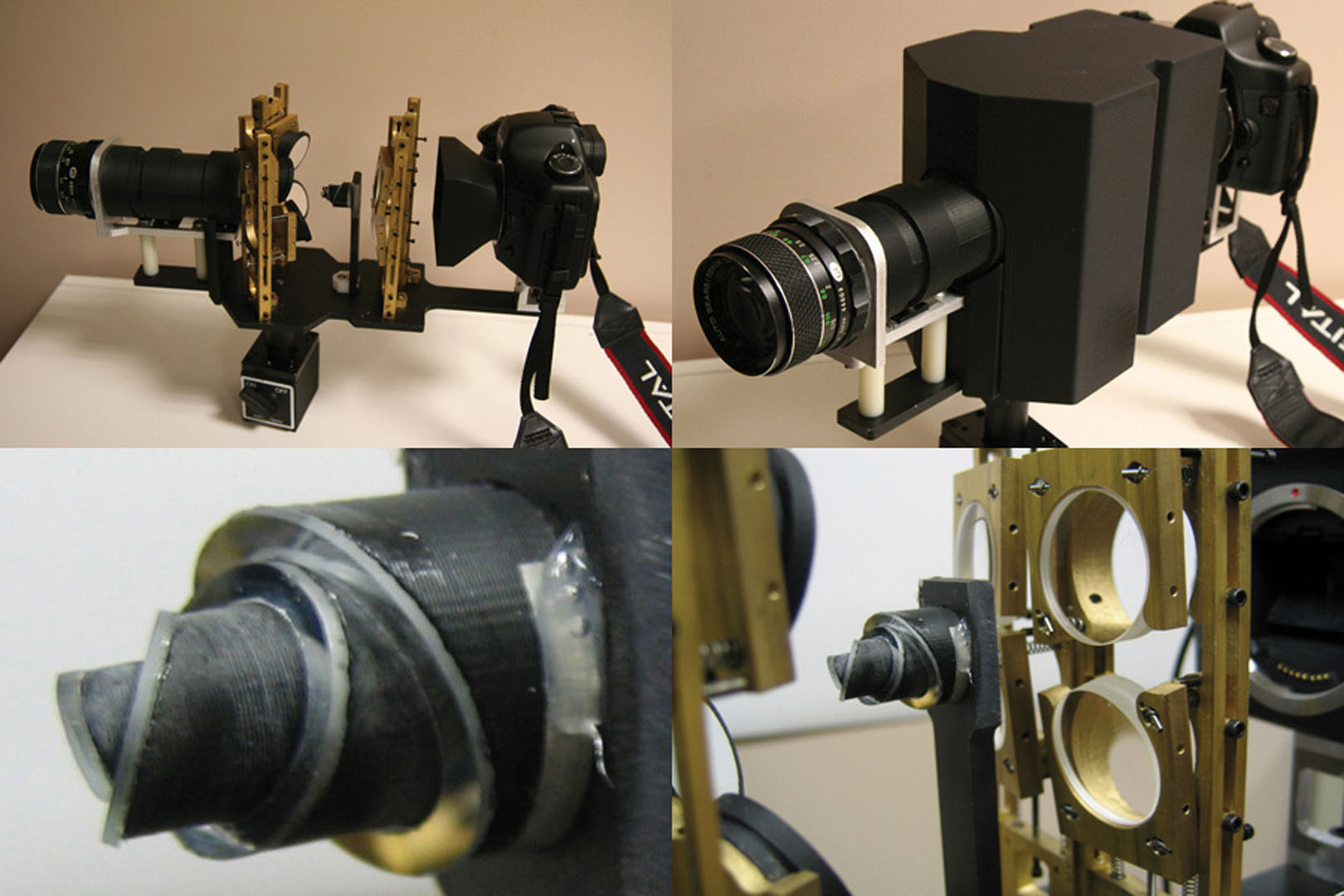“Multi-aperture photography” by Green, Sun, Matusik and Durand
Conference:
Type(s):
Title:
- Multi-aperture photography
Presenter(s)/Author(s):
Abstract:
The emergent field of computational photography is proving that, by coupling generalized imaging optics with software processing, the quality and flexibility of imaging systems can be increased. In this paper, we capture and manipulate multiple images of a scene taken with different aperture settings (f-numbers). We design and implement a prototype optical system and associated algorithms to capture four images of the scene in a single exposure, each taken with a different aperture setting. Our system can be used with commercially available DSLR cameras and photographic lenses without modification to either. We leverage the fact that defocus blur is a function of scene depth and f/# to estimate a depth map. We demonstrate several applications of our multi-aperture camera, such as post-exposure editing of the depth of field, including extrapolation beyond the physical limits of the lens, synthetic refocusing, and depth-guided deconvolution.
References:
1. Adelson, E. H., and Wang, J. Y. A. 1992. Single lens stereo with a plenoptic camera. IEEE Transactions on Pattern Analysis and Machine Intelligence 14, 2, 99–106. Google ScholarDigital Library
2. Aggarwal, M., and Ahuja, N. 2004. Split aperture imaging for high dynamic range. Int. J. Comp. Vision 58, 1 (June), 7–17. Google ScholarDigital Library
3. Boykov, Y., Veksler, O., and Zabih, R. 2001. Fast approximate energy minimization via graph cuts. IEEE Transactions on Pattern Analysis and Machine Intelligence 23, 11. Google ScholarDigital Library
4. Chaudhuri, S., and Rajagopalan, A. 1999. Depth From Defocus: A Real Aperture Imaging Approach. Springer Verlag.Google Scholar
5. Farid, H., and Simoncelli, E. 1996. A differential optical range camera. In Optical Society of America, Annual Meeting.Google Scholar
6. Georgiev, T., Zheng, K. C., Curless, B., Salesin, D., Nayar, S., and Intwala, C. 2006. Spatio-angular resolution tradeoffs in integral photography. In Proceedings of Eurographics Symposium on Rendering (2006), 263–272. Google ScholarCross Ref
7. Harvey, R. P., 1998. Optical beam splitter and electronic high speed camera incorporating such a beam splitter. US 5734507, United States Patent.Google Scholar
8. Hasinoff, S., and Kutulakos, K. 2006. Confocal stereo. In European Conference on Computer Vision (2006), 620–634. Google ScholarDigital Library
9. Hecht, E. 2002. Optics. Addison-Wesley, Reading, MA.Google Scholar
10. Hiura, S., and Matsuyama, T. 1998. Depth measurement by the multi-focus camera. In IEEE Computer Vision and Pattern Recognition (1998), 953–961. Google ScholarDigital Library
11. Isaksen, A., McMillan, L., and Gortler, S. J. 2000. Dynamically reparameterized light fields. In Proceedings of ACM SIGGRAPH 2000, Computer Graphics Proceedings, Annual Conference Series, 297–306. Google ScholarDigital Library
12. Levin, A., Lischinski, D., and Weiss, Y. 2004. Colorization using optimization. ACM Transactions on Graphics 23, 3 (Aug.), 689–694. Google ScholarDigital Library
13. McGuire, M., Matusik, W., Pfister, H., Hughes, J. F., and Durand, F. 2005. Defocus video matting. ACM Transactions on Graphics 24, 3 (Aug.), 567–576. Google ScholarDigital Library
14. McGuire, M., Matusik, W., Chen, B., Hughes, J. F., Pfister, H., and Nayar, S. 2007. Optical splitting trees for high-precision monocular imaging. IEEE Computer Graphics and Applications (2007) (March). Google ScholarDigital Library
15. Naemura, T., Yoshida, T., and Harashima, H. 2001. 3-D computer graphics based on integral photography. Opt. Expr. 8.Google Scholar
16. Narasimhan, S., and Nayar, S. 2005. Enhancing resolution along multiple imaging dimensions using assorted pixels. IEEE Transactions on Pattern Analysis and Machine Intelligence 27, 4 (Apr), 518–530. Google ScholarDigital Library
17. Ng, R. 2005. Fourier slice photography. ACM Transactions on Graphics 24, 3 (Aug.), 735–744. Google ScholarDigital Library
18. Okano, F., Arai, J., Hoshino, H., and Yuyama, I. 1999. Three-dimensional video system based on integral photography. Optical Engineering 38 (June), 1072–1077.Google ScholarCross Ref
19. Pentland, A. P. 1987. A new sense for depth of field. IEEE Transactions on Pattern Analysis and Machine Intelligence 9, 4, 523–531. Google ScholarDigital Library
20. Ray, S. 1988. Applied photographic optics. Focal Press.Google Scholar
21. Szeliski, R., Zabih, R., Scharstein, D., Veksler, O., Kolmogorov, V., Agarwala, A., Tappen, M. F., and Rother, C. 2006. A comparative study of energy minimization methods for markov random fields. In European Conference on Computer Vision (2006), 16–29. Google ScholarDigital Library
22. Watanabe, M., Nayar, S., and Noguchi, M. 1996. Real-time computation of depth from defocus. In Proceedings of The International Society for Optical Engineering (SPIE), vol. 2599, 14–25.Google Scholar




